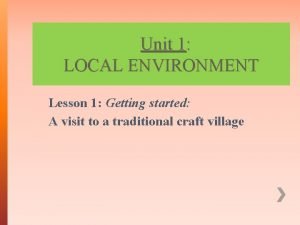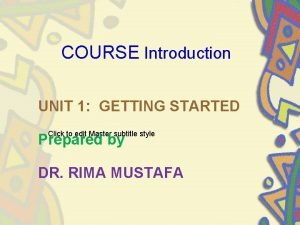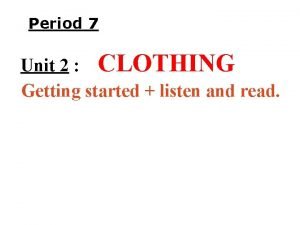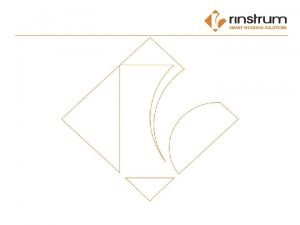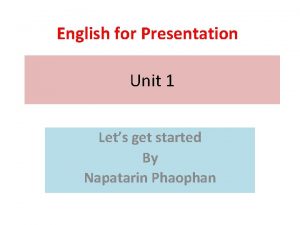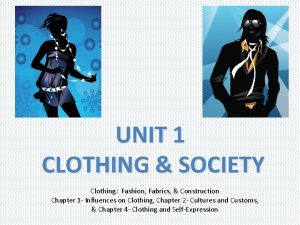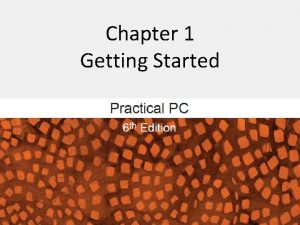Period 7 Unit 2 CLOTHING Getting started listen
































- Slides: 32

Period 7 Unit 2 : CLOTHING Getting started + listen and read.

Guessing words: a b c d e f

a / Where does she come from ? J A P A N

b/ Where does she come from ? V I E T N A M

c/ Where does he come from? S C O T L A N D

d/ Where does she come from ? I N D I A

e/ Where does he come from? A M E R I C A

f/ Where does she come from ? A R A B I A

I/ Getting started: a - She comes from Japan. b - She comes from Vietnam. c - He comes from Scotland. d - She comes from India. e - He comes from the USA (America). f - She comes from (Saudi) Arabia.

II/Listen and read: 1. New words: a poet: Tố Hữu nhà thơ

- a long silk tunic : a o lụa dài , rộng - (to) slit : xẻ

ethnic minorities: (pl. n ) dân tộc thiểu số

1. New words: -a poet : nhà thơ Ex: To Huu is a poet - a long silk tunic : áo lụa, dài rộng - (to) slit : xẻ - ethnic minorities : dân tộc thiểu số - a pattern : hoa văn - (to) take inspiration from …: lấy cảm hứng từ… Ex: They take inspiration from something.

*Checking vocabulary: Matching A poet Inspiration A pattern A long silk tunic To slit Ethnic minority Hoa văn. Cảm hứng Xẻ Dân tộc thiểu số Áo lụa dài rộng Nhà thơ

2/ Listen and read :

3/ Model seetences: a/ Poets, writes and musicans have mentioned the Ao dai in poems, novels and songs. The present perfect tense Form : S+ have/ has + V 3/ed b/ The Ao dai was frequently worn by men and women. Passive voice Form : S+ be + V 3/ed + (by O)

2. Complete the sentences: 1. For a long time the aodai has been the subject poems , novels and songs. of………………… long silk tunic with 2. The aodai is described as a …………. slits up the sides worn over loose pants. . . 3. The majority of Vietnamese women prefer to wear modern clothing at work. ………………… 4. Some designers have modernized the aodai by lines of poetry on it printing ……………… such as 5. Another alternative is to add symbols …………………. suns, stars , crosses and stripes ………………………

3. Lucky numbers: 1 4 7 2 5 8 3 6 9

1. LUCKY NUMBER.

2. Who used to wear the aodai by tradition ? Traditionally , men and women used to wear the aodai.



3. Why do the majority of Vietnamese women prefer to wear modern clothing ? Because it is more convenient

4. LUCKY NUMBER

5. What have fashion designers done to modernize the Aodai ? They have printed lines of poetry on it or have added symbols such as sun, stars , crosses and stripes to the Aodai.

6. LUCKY NUMBER.

7. Do these majority of Vietnamese women prefer to wear Aodai at work these days? No , they don’t.

8. What do the women usually wear on special occassions ? The Aodai.

9. LUCKY NUMBER.

3. Answers: a. Traditionally, men and women used to wear the aodai. b. Because it is more convenient. c. They have painted lines of poetry on it or have added symbols as suns , stars , crosses , and stripes to the aodai.

4. Homework: 1. Learn the new words by heart. 2. Answer the questions: Do you like wearing Aodai at school ? Why? Can you write down some kinds of clothes ? 3. Prepare for next lesson: U 2: Speak + Listen

Goodbye class! Thank you very much Thank youverymuch
 The secret to getting ahead is getting started
The secret to getting ahead is getting started When does elena receive dolls from her family members
When does elena receive dolls from her family members Local environment getting started
Local environment getting started Find these things in unit 1
Find these things in unit 1 English 9 unit 3 getting started
English 9 unit 3 getting started Unit 1 getting started
Unit 1 getting started Vietnamese women prefer to wear modern clothing
Vietnamese women prefer to wear modern clothing Getting started with vivado
Getting started with vivado Unix for bioinformatics
Unix for bioinformatics Splunk e learning
Splunk e learning Rancher get started
Rancher get started Getting started with excel
Getting started with excel Outlook 2010 tutorial
Outlook 2010 tutorial Counter code
Counter code Lua getting started
Lua getting started Linkedin getting started
Linkedin getting started Getting started with vivado
Getting started with vivado Perl read_file
Perl read_file Getting started with ft8
Getting started with ft8 Poll everywhere register
Poll everywhere register Android development getting started
Android development getting started Getting started with access
Getting started with access Getting started with eclipse
Getting started with eclipse Hakan kutucu
Hakan kutucu Jose feliciano rain
Jose feliciano rain Classical music has less complicated texture
Classical music has less complicated texture Early period symptoms
Early period symptoms Let's start with introduction
Let's start with introduction Unit 2 getting acquainted with the vehicle
Unit 2 getting acquainted with the vehicle Unit 1 getting to know my classmates
Unit 1 getting to know my classmates Unit 2 getting acquainted with the vehicle answer key
Unit 2 getting acquainted with the vehicle answer key A fiber is the smallest unit of a textile material
A fiber is the smallest unit of a textile material Cynthia lightfoot
Cynthia lightfoot


